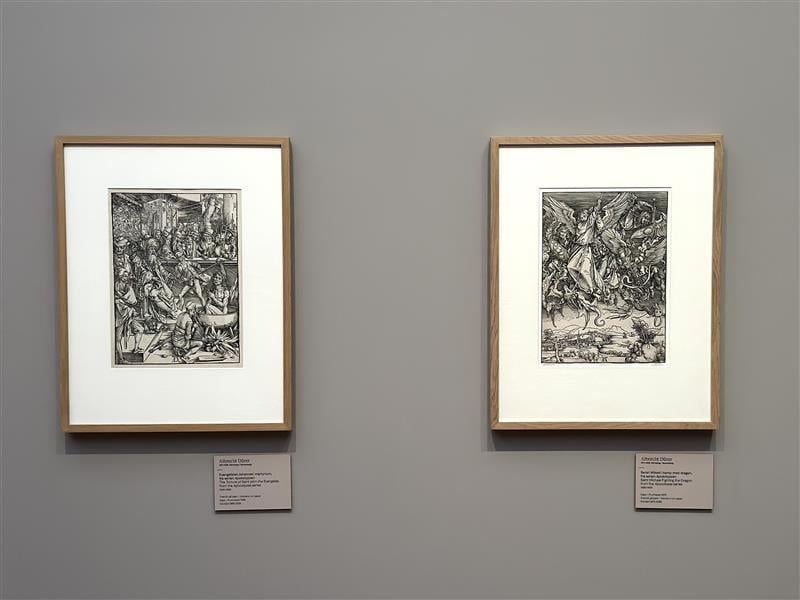Albrecht Dürer

Transcription
Narrator
We are now in the 14th-16th centuries, at the climax of German printmaking, the boom of graphics.
Woodcuts and copper engravings are the most common graphic techniques at this time, but for an untrained eye it can be difficult to see the difference, says Trine Nordkvelle, art historian at the National Museum…
Trine Nordkvelle
Woodcuts utilise the simplest technique. Many people have experienced potato printing from primary school. In order to make a heart in the potato, you have to cut away everything around it, leaving a heart shape. Then one can add colour and press it onto paper. This is also the case with woodcuts - you have to cut away everything you don't want to include in the print.
Narrator
When you are going to make a print from a copperplate, you engrave the motif into a copper plate with an etching needle and it is the lines you have scratched in that, when filled with printing ink leave an imprint and become black on the paper.
Trine Nordkvelle
In the 15th century, there was more access to paper, and you also had the invention of the letterpress, which created fertile ground for graphic art.
Narrator
And how does this affect the spreading of art throughout the world?
Trine Nordkvelle
With graphics, more works of art were produced and distributed internationally.
Narrator
As the art moves around the world, artists were influenced by each other across national borders. At the same time, graphics begin to stand on its own legs independently from the painting world, with representations of biblical, mythological and non-religious motifs.
We now see the artist stepping out as an individual for the first time. The artwork is no longer made by many craftsmen in collaborations in workshops but gets attributed to one single artist.
Trine Nordkvelle
In the past, it was not common for artists to promote themselves. For example, artists in Northern Europe were at that time, primarily seen as good craftsmen.
Narrator
Artists such as Albrecht Dürer began to sign their works. He recognised that there was money in art graphics as the works could be printed and sold in many copies.